I have a deep and abiding love for a good baguette. Notice, I said a GOOD one. Ever since spending a semester in France back in college, I consider myself something of a baguette connoisseur, and in each of the various places I’ve lived since, I’ve always sought out the very best baguette. There was a bakery in Lexington that made my French, high quality baguette dreams come true… and then it closed. I was surprised and delighted to find a delicious baguette right under my nose at work! The Co-op started carrying Sunrise Bakery‘s baguettes, and they are divine.
 A 19-year-old me in Paris trying to be as French as possible. (Baguette not pictured as it was already consumed.)
A 19-year-old me in Paris trying to be as French as possible. (Baguette not pictured as it was already consumed.)Back to France for a moment; I had a host family that would occasionally pick up my roommate and myself and take us to their renovated 15th century barn house and feed us delicious food and laugh at us as they gave us stinky cheeses to try. One of my favorite memories, though, involved this couple picking us up in their car and then having an argument about where to get the baguette for dinner. My French was, and still is, not very good, but I gathered that the boulangerie (bakery) in our school’s village was not very good. “C’est de la merde”, said the wife (if you don’t know any French, basically she was throwing some serious shade at our local baker). They then drove to the next village’s boulangerie, grabbed a bare loaf and threw it into “the boot”. Yes, they threw unwrapped bread into the trunk of the car. They acted like they did this everyday, so I didn’t protest.
Cultural quirks aside, I learned something: NOT ALL BAGUETTES ARE GOOD. A good baguette has a crispy and cracked exterior. A good baguette has vast pockets and craters of air within it. A good baguette can be paired with a generous slather of creamy European butter and make a delicious meal (maybe add a glass of wine, too). A good baguette should never be wasted. More on that in a moment, but first…
How do you know if you have a good baguette?
Let’s start with examples of what to avoid:
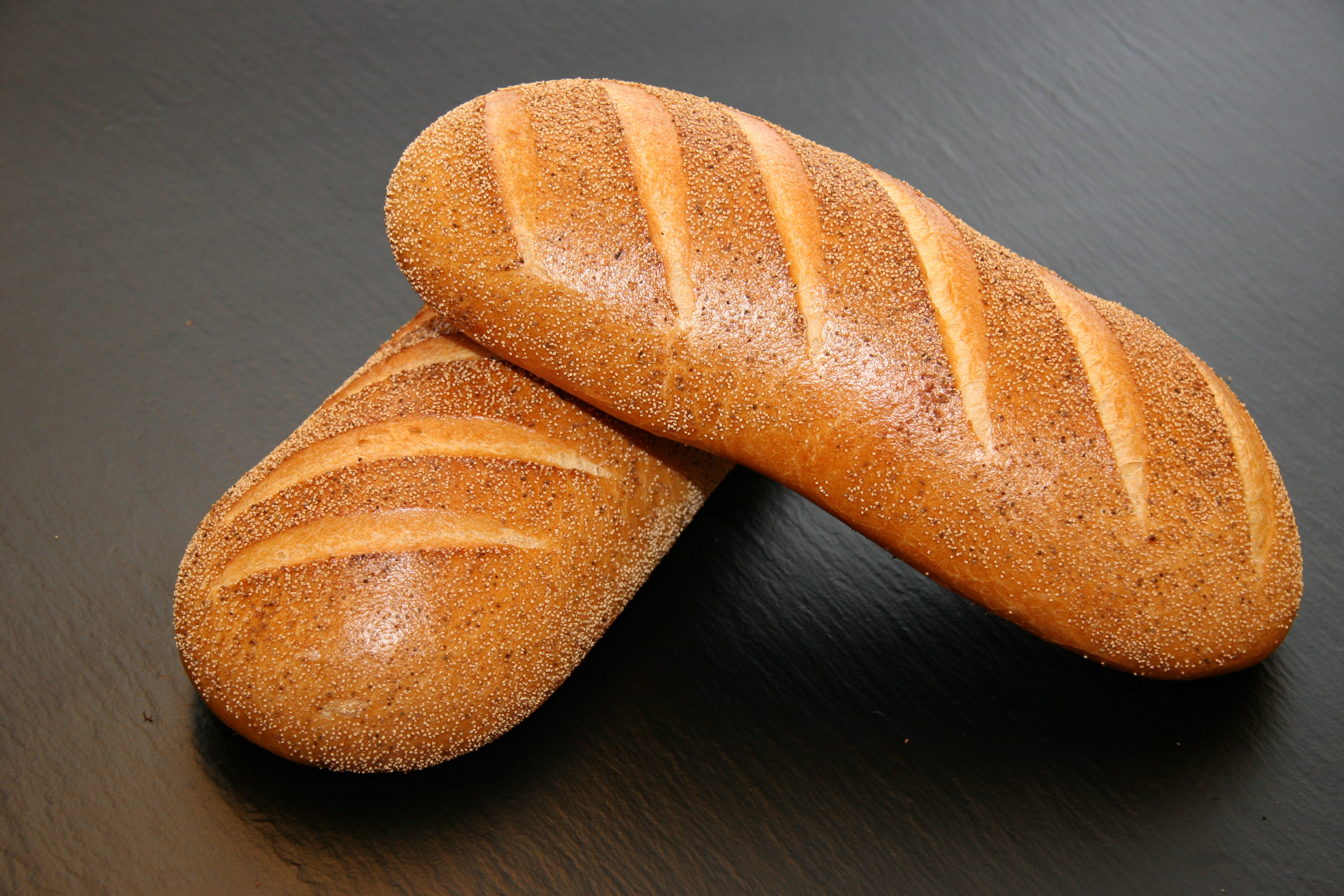
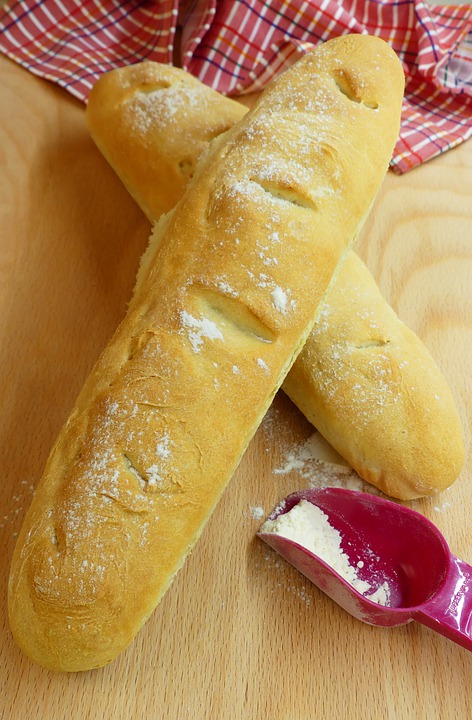
This specimen on the left is far too wide and the crust far too smooth and… what is that I see? Some sort of coating on it? No no no. This is all wrong.
The one to the right is, again, too smooth of an exterior, which leads me to believe the interior’s sub-par too. Where’s that golden, crunchy, crevassed crust?

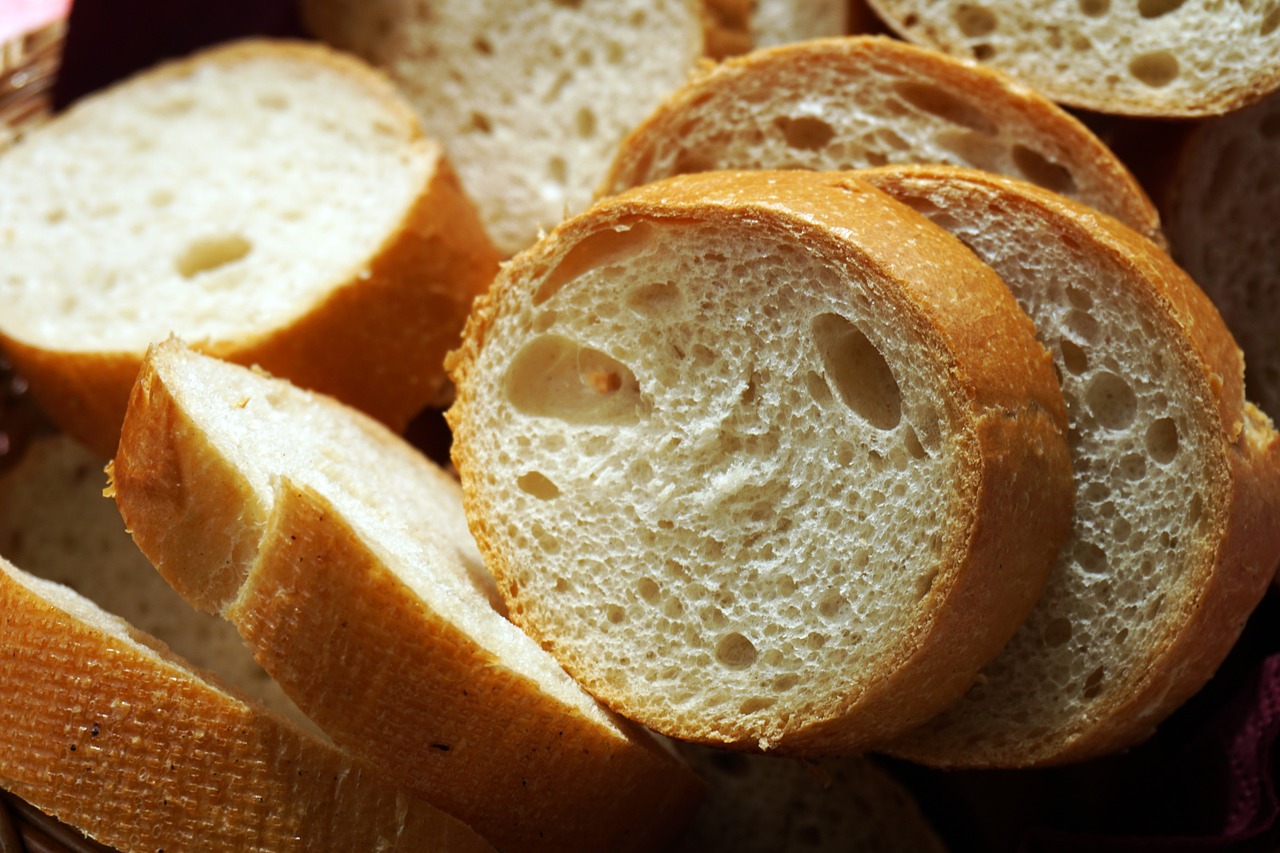
We’re getting better on the texture with this one on the left, but what are those speckled bits? A good baguette needs only 4 ingredients: flour, water, yeast and salt.
The interior in the “baguette” pictured to the right is sad. A good baguette would have much bigger holes throughout it and the interior will looked stretched, evidence of the dough having plenty of time to let the yeast and gluten do their thing. Not only does this create the right texture, it’s imperative to good flavor. Also, that crosshatch on the bottom? No. Dead giveaway that this is not a good, handcrafted baguette.
This is what you should be looking for…
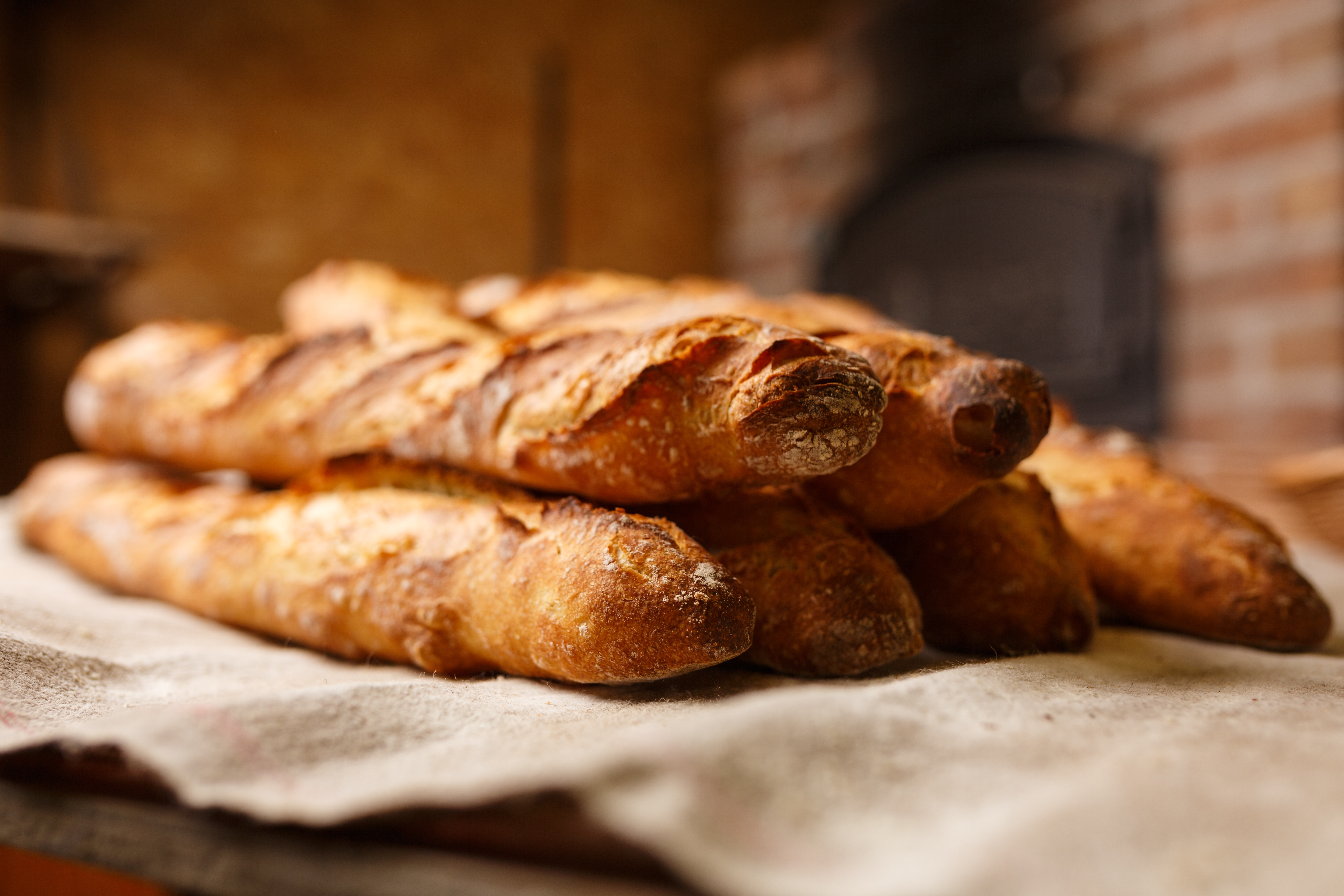
As you may gather, making a good baguette is a time and labor intensive process. Don’t take my word for it. Check out this Bakers Journal interview with some of the world’s most experienced baguette masters where they mention proofing the dough for 16-18 hours!
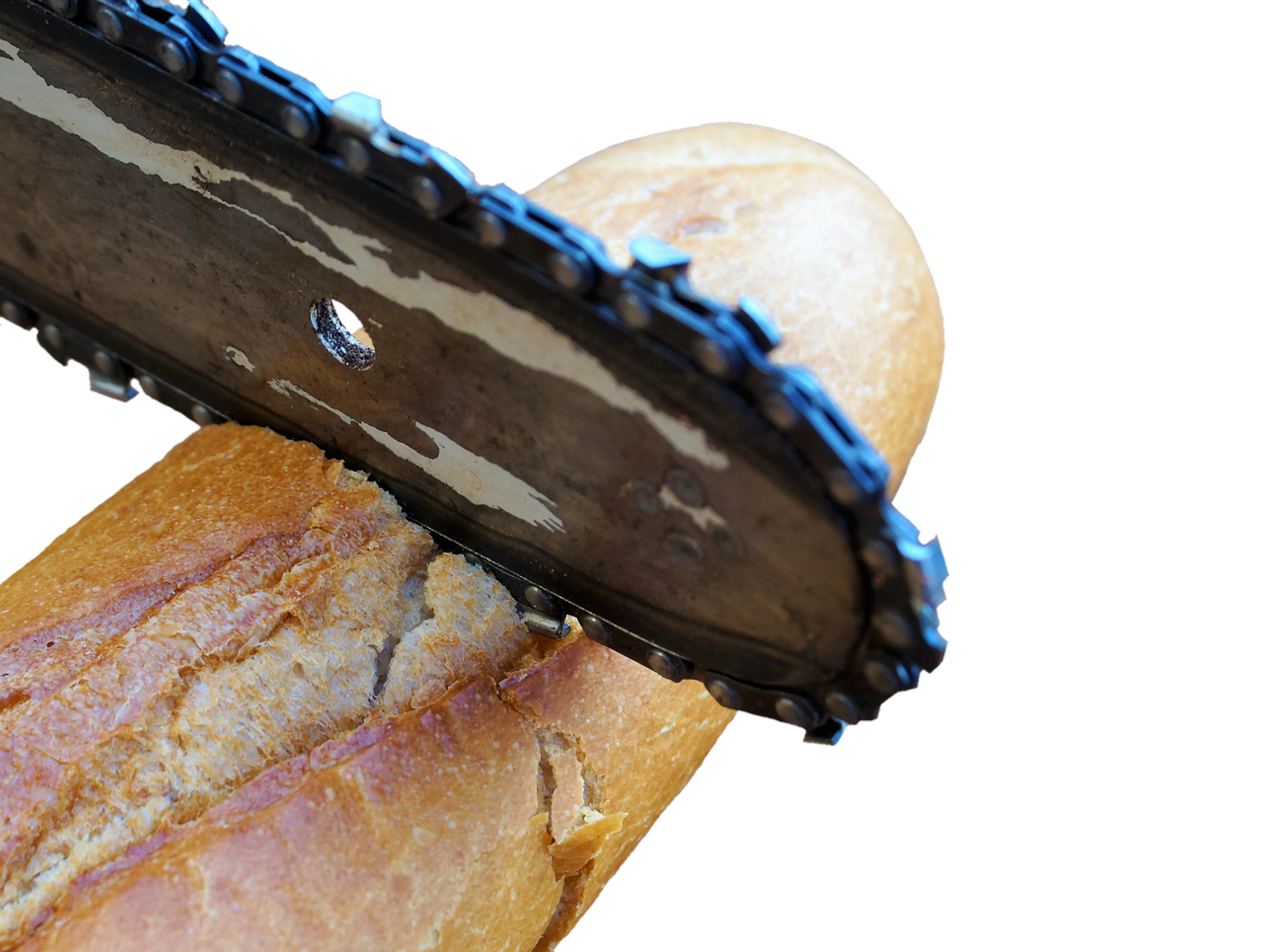
Because so much care goes into crafting this carb-a-licious creation, we shouldn’t shed a tear and trash them when they get a little stale.
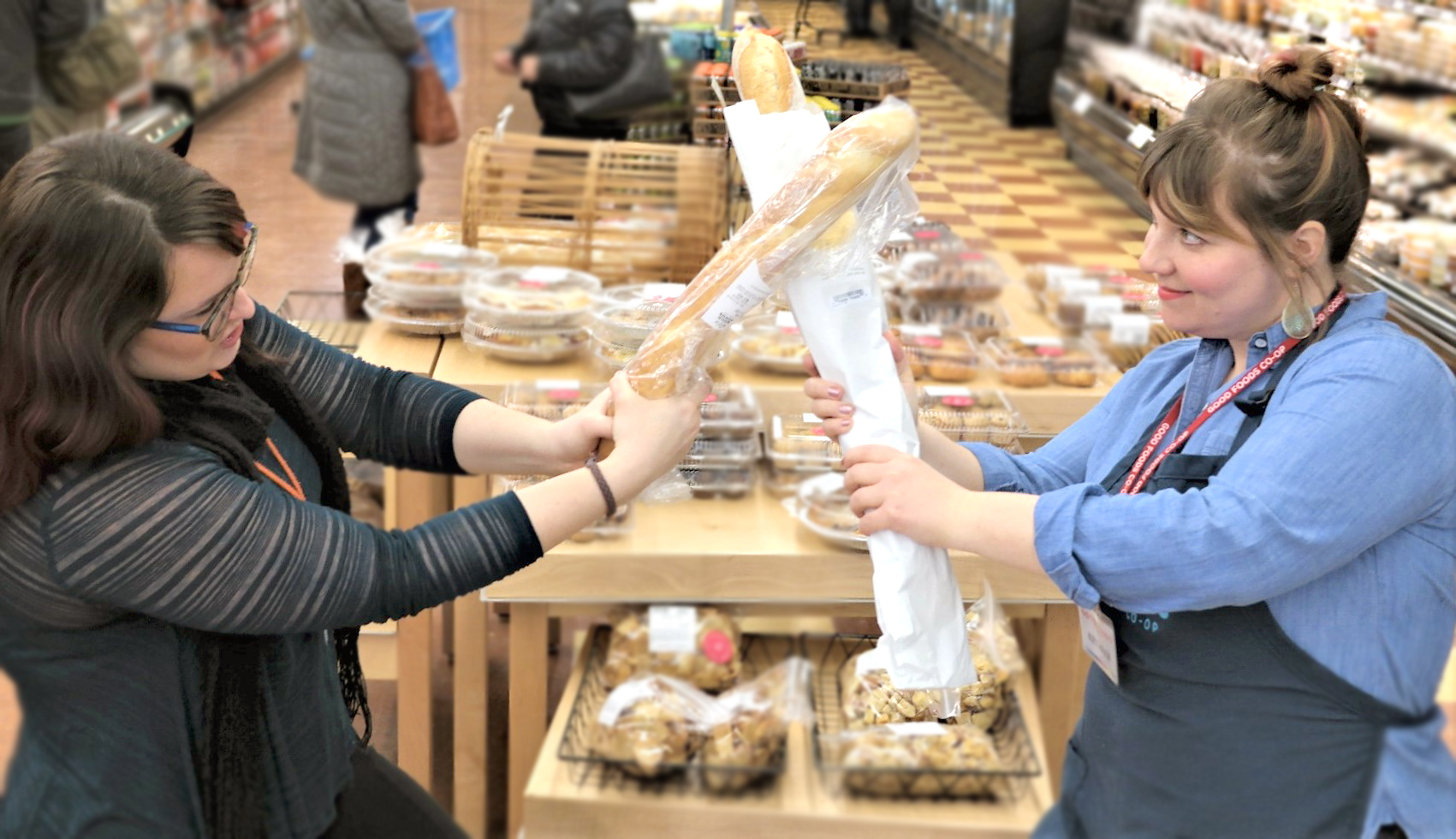
Stale baguettes are salvageable. Stale baguettes can once again be delicious. Stale baguettes are better for more than just lightsaber fights.
So, what do you do if it’s day two or day ten?
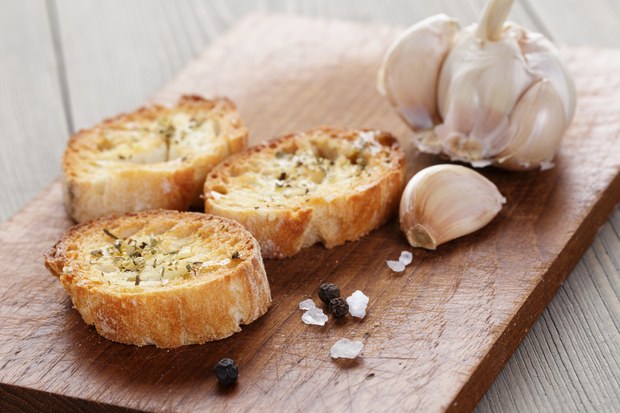 Photo credit: epicurious.com.
Photo credit: epicurious.com.A great day-two idea (since the baguette is still slice-able) is to make crostini. Just cut the baguette into half-inch thick slices, on the bias. Brush with olive oil (and maybe some crushed garlic) and sprinkle with salt, then bake off those babies at 375 for about 10-12 minutes or until golden brown around the edges. There are about a million toppings to serve with your crostini. In fact, there are 13 serving suggestions in this Epicurious recipe by Chef Wolfgang Puck alone.
 Photo credit: food-hacks.wonderhowto.com
Photo credit: food-hacks.wonderhowto.comWhat if I told you there was a miraculous method with which you can resurrect your baguette from the brink of uselessness? It’s like a time machine that makes your baguette taste bakery fresh – crusty on the outside and soft on the inside. It involves taking your stale baguette for a dip under running water. Yes, it feels wrong, but hang in there. If you have an exposed part of the baguette interior, try your best not to oversaturate it. Next, wrap that wet baguette in plenty of foil and put it in a cold oven. Set the temperature to 300 and let that beautiful bread come back to life for about 10 minutes. Remove the foil and put back in the oven to crisp up for another few minutes. I’ve used this method multiple times and I’m astounded each time. I’ve even done it to a week-old loaf with success. Bookmark these step by step directions for future reference. It will help you save money and keep perfectly good food out of the garbage.
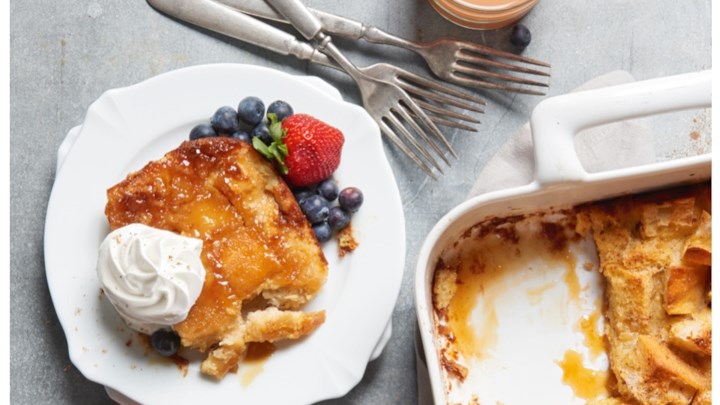 Photo credit: allrecipes.com
Photo credit: allrecipes.comFinally, what can you do when the baguette is so old and hard you’re not even sure the sink-foil-oven method will work? Well, you may be in for the tastiest baguette hack yet. I halved this French Toast Casserole recipe to use up the remaining half of a week+ old baguette. I also used WAY more than a pinch of cinnamon. Hey, it’s good for you. I probably reversed any of the health benefits of the cinnamon, however, when I poured some splashes of heavy whipping cream over the drier-looking baguette bits after the overnight soaking and before putting the casserole in the oven. #noregrets It may have been the best decision of my life. The casserole was warm and gooey in the middle and buttery and crisp along the edges and the top. Both of my brunch buddies who acted as my taste testers were raving about it and asking for the recipe.
So there you have it, three delicious solutions for using that carefully-crafted, carb-loaded delicacy, even if it’s past its prime. Or, if you’d rather not cook at all, at least use those crunchy crumbs to make some duck friends – a noble use of this perfect and simple French staple. Bon appétit!
